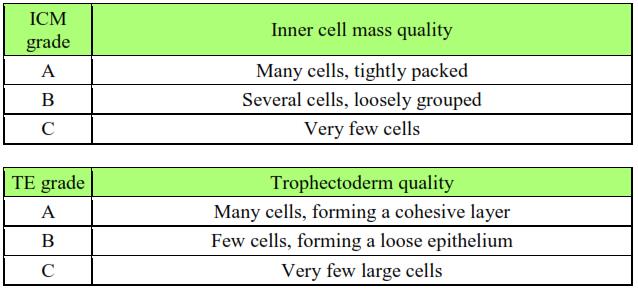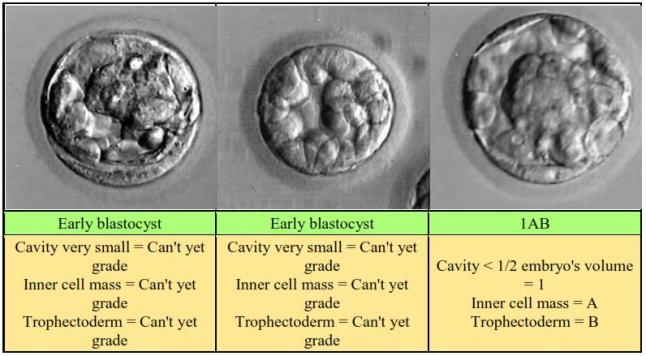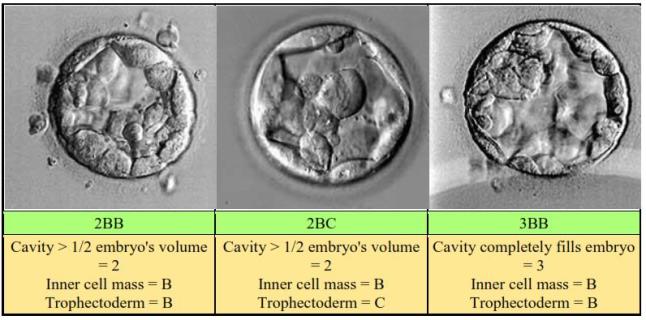So they took out 40 eggs…now what? All I can say is thank goodness for science and modern technology! So what happens to our little oocytes now? Upon retrieval, the eggs are rushed to the embryologist where they analyze the maturity of and grade each egg. (They have already collected and washed – separated the sperm from the seminal fluid – the ‘sample’ from your hubby while you were in the OR). Depending on the recommendation of your doctor, and of course it is ultimately your choice, your eggs are fertilized ‘naturally’ in a petri dish with many sperm racing to the egg, or by ICSI, Intra-cytoplasmic sperm injection. With ICSI, the embryologist has analyzed all sperm, and has chosen the fastest, fully developed, and most outright drop-dead gorgeous ones. 😉
Each egg is then INDIVIDUALLY fertilized by injecting the choice sperm into the egg. And then…we wait! It is expected that not all eggs will make it, each day more and more will fall off. That is one good thing with having PCOS as your barrier to ‘natural fertility’…you constantly have a TON of eggs. The more eggs you start off with, the better your chances of having a LOT of embryos with the highest grade possible. Yep, I said grade. Starting off in the academic world right from the get go where you want to get the highest AP score possible and As are supreme. They’re graded 1-4 followed by two letters A-D (D is non-viable). Here is a chart that best explains it.
“The Gardner blastocyst grading system assigns 3 separate quality scores to each blastocyst embryo:
- Blastocyst development stage – expansion and hatching status
- Inner cell mass (ICM) score, or quality
- Trophectoderm (TE) score, or quality
Blastocysts are given a quality grade for each of the 3 components and the score is expressed with the expansion grade listed first, the inner cell mass grade listed second and the trophectoderm grade third.” http://www.advancedfertility.com/blastocystimages.htm
Now since I’m a visual person…here are some pics to go along with them.
Early blastocyst grading photos:
Large, well expanded blastocyst grading images:
Some doctors will call you after a couple of days and let you know the final outcome of successfully developed embryos. We were lucky enough to have our doctor call us EVERY DAY to give us an update on our little ones. We were also able to get a copy of our embryologist’s nifty worksheet as they were attending to our little embies day in and day out. Most of it makes sense, but it is a little confusing so I’m just going to summarize our updates below.
- Day 0: Sunday 11/2: 7:30 AM 40 Eggs retrieved
- 25 Fully mature, 13 partially mature, and 2 umm…duds?
- They were placed in a medium to see if the partially mature ones would continue to mature.
- By 6 pm, eggs were fertilized through ICSI
- Day 1: Monday 11/3: 32 of them successfully fertilized
- Day 2: Tuesday 11/4: 29 survivors! 27 of them are looking strong at 3-5 cells; expecting half of them to slow down and not continue to divide.
- Day 3: Wednesday 11/5: Over 20 of them are still growing, 5 have slowed down a little
- Day 4: Thursday 11/6: Caren goes into the hospital – we will most likely not be doing a fresh transfer. 22 are looking good, 7 have slowed down. Each embryo has been graded.
- Day 5: Friday 11/7: There is no way a fresh embryo transfer will take place. All blastocysts arecryofrozen in straws. Yea, straws…like coffee looking like straws, except scientific coffee straws. (4) of our little AA’s have their own straw, and everyone else is sharing with anotherembie.
-
Our final count: (14) 4AA, (4) 4AB, (1) 4BB, (3) 3BB
-
22 EMBRYOS!!!
-
We were also told, that just because they look beautiful in an embryologist’s eyes, doesn’t mean that they will all survive. They could have chromosomal abnormalities just like any other egg or sperm cell. You can have them test to check for chromosomal abnormalities and gender, but that costs another pretty penny. Like $5,000 for up to 8 embryos. Now think back to the number of embryos we had…you’re correct… we would’ve had to dish out an ADDITIONAL $15,000. Since we didn’t have the extra dough, the outcomes are out of our hands. We are one step closer to holding our little babies.
Please, let this be our time.




